Selecting the right software is a very stressful process. There is a lot riding on this. As you navigate from Website to Website, you may find yourself trying to read between the lines. You’re searching for a piece of tech that you can trust and you don’t want to get burned. The wrong decision can be catastrophic and it’s hard to know exactly what you’re going to get. When you hit the Implementations J Curve, you may feel like you made the wrong decision.
Sometimes warehouses jump from software to software spending a fortune trying to find the right solution. Understanding the “Implementations J Curve” is the key to a successful install.
What Is the Implementations J Curve?
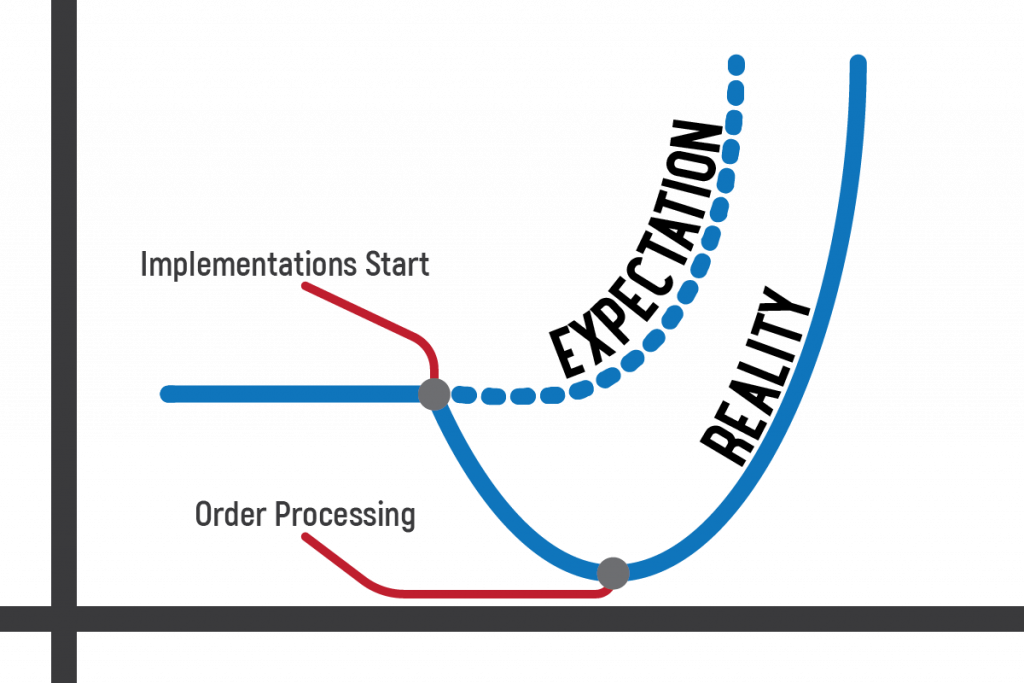
The Implementations J Curve is a graph explaining how the process works. Often companies begin implementations with unrealistic expectations. They hope for a quick return on investment. As you can see, that is rarely the reality.
Think of installing software like replacing a tree. You can’t simply cut the old tree down. You have to uproot it. It’s messy. Often after you uproot the old, you have to dig more to replace it. Replacing your supply chain software works much the same way.
It doesn’t matter if you are a start-up, you use Excel, or you have another system. It’s a process. Things have to get worse before they get better. You may have to remap your warehouse. You’ll need to uproot your integrations and connect them to something new. Then you have to consider your carriers, your customers, and your employees. More than anything else you have to get comfortable with the nuances of your new system.
How to Get Through the Implementation J Curve
Manage Expectations
Most likely, you’ve been through some big changes in your life. Maybe you moved, got married, got divorced, changed careers, gone back to school, and so on. Was it comfortable at first? Sometimes yes, sometimes no. In either case, things changed. When you implement new software, you need to prepare for the J Curve. For some organizations, the drop is more significant than with others. But prepare for the worst. Know that it sometimes takes 6-12 months to get comfortable again.
If you are the decision maker, you need to pass this message on to your team. If you want to see a payoff in 3 weeks, you’re going to be disappointed. On the other hand, if you prepare for the worst-case scenario in a month, you may be pleasantly surprised.
Trust the Process
Your software provider is excruciatingly familiar with the Implementations J Curve. Odds are the entire implementations process is designed to move you through it as quickly as possible. When a warehouse team tries to lead the process it takes twice as long and prolongs the downslope. Often this adds weeks or months to the process.
Do:
- Let them lead
- Follow their instructions
- Communicate
- Be Patient
Dont:
- Jump ahead
- Insist on your old process
- Miss due dates and meetings
- Cut ties with your old system before its time
Start with Your Minimum Needs, Then Grow Modularly
It’s impossible to swap systems with the click of a button. Define your minimum order processing needs and focus only on them (to start). When you are processing orders, you’ve hit the bottom of the J Curve. Getting to the bottom of the J Curve should be the top priority.
For example, let’s say you currently use Shipping Software A but want Shipping Software B. Get your team processing orders before you make the switch. And approach these features one-by-one in order of importance. Make sure your implementations team is ready for the next thing. The mantra is, “Add, stabilize, add, stabilize, etc.”
Have a Team Leader
This is the person in charge of the process. He or she is your filter and will be the one to teach everyone else. It is far better to have one expert than four people who understand different parts. If there is work to be done, let your team leader either do it or delegate.
Be Forewarned: The team leader may need to delegate their normal responsibilities. Remember that your business will feel more pressure during the switch. It’s completely normal.
Understand That Things Will Be Different
Sometimes it’s small and sometimes it’s not. Remember, this is a new industry and things as simple as words can vary drastically from system to system. The process may differ from your original expectations. Get the system in place, experience the new way, and decide if it works for you. It’s way easier to adjust from a stable system than during implementations.
Best Practice
Master the question “Why?” Ask why is this the way that it is? Or why do orders come in this way? Why? Maybe you’ll hear an answer and think, “That’s dumb.” Maybe you’re right. But if you understand why, then you’ll better grasp the system as a whole. Try the new way for a while and decide if you want something different.
Conclusion
Implementation is tough. The companies that implement the fastest (regardless of size) follow these tips. Put someone in charge, trust the process, and get to the bottom of the J Curve. Things will be different, but they’ll be better. Like a well-tailored suit, you start with something not quite perfect. But give implementations some time and you’ll look like Frank Sinatra.
Remember that every day you are stepping closer to the uptick. Remember why you chose this provider in the first place. Quitting on the downward slope just means that where you are is your new starting point. The Implementations J Curve is pervasive and you’ll run into it again. Only this time, it will be even worse.


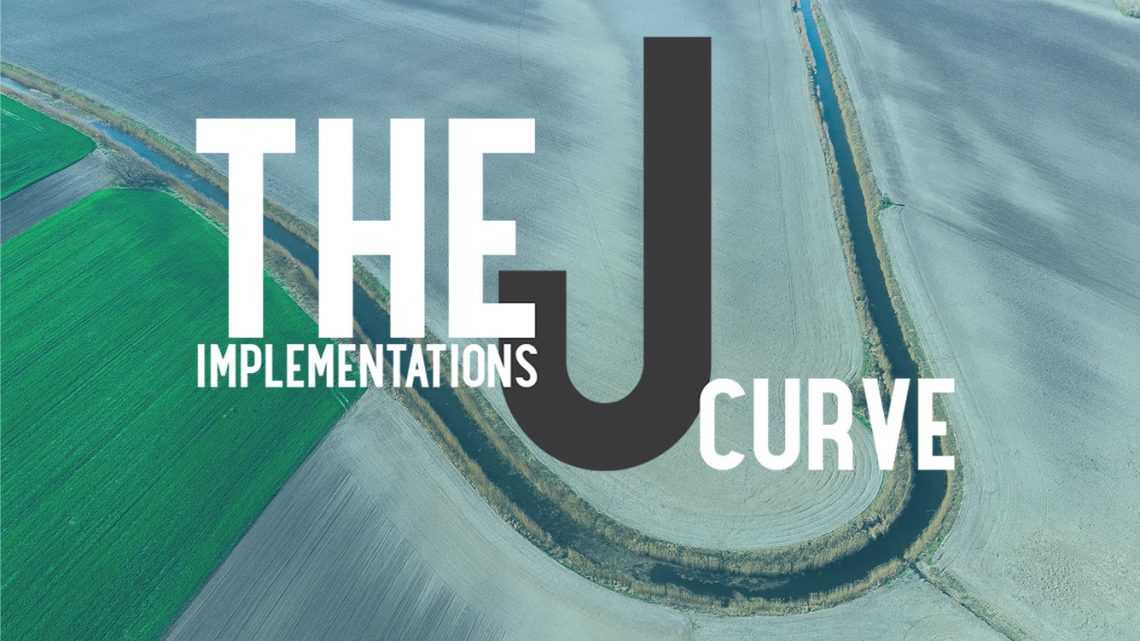






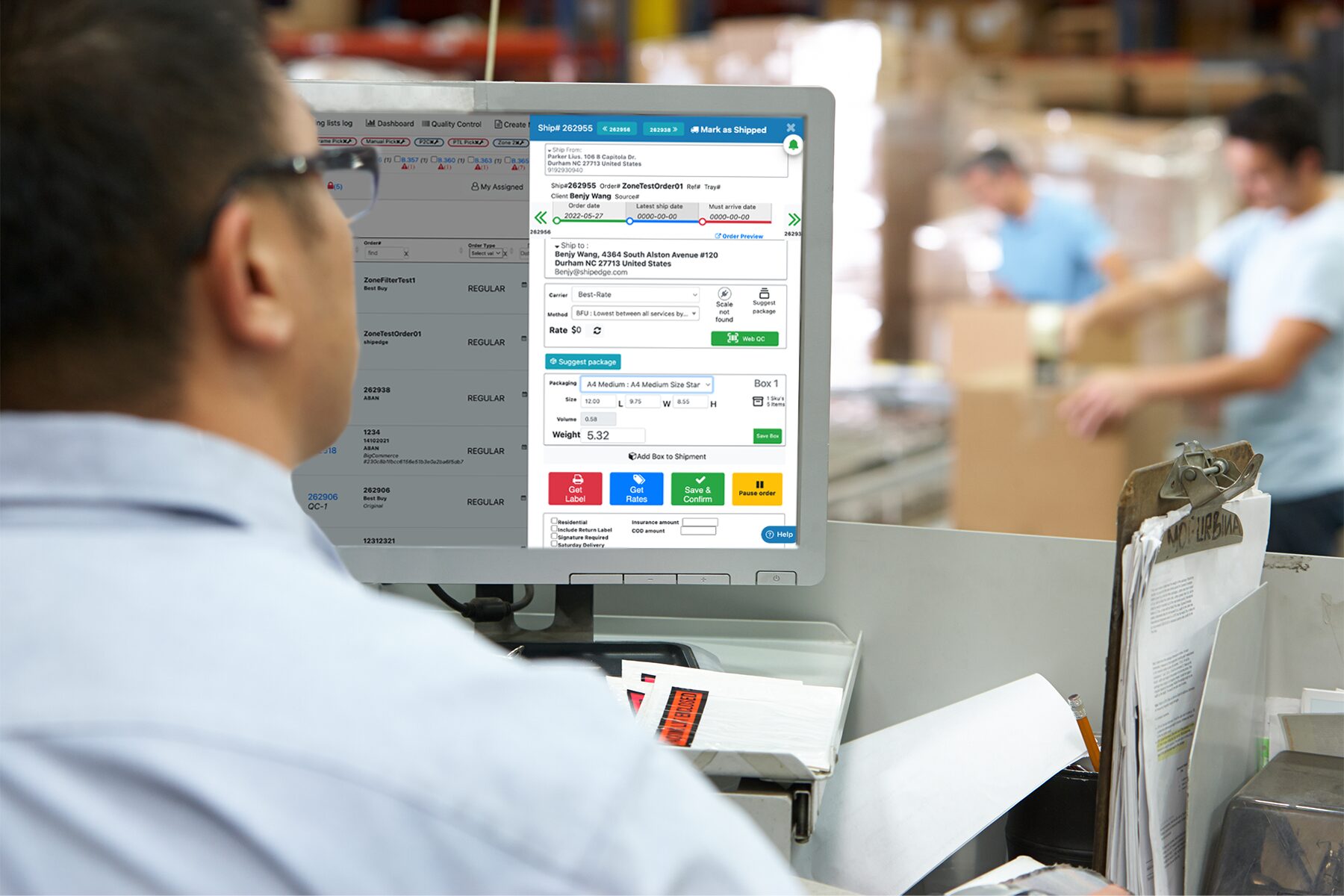
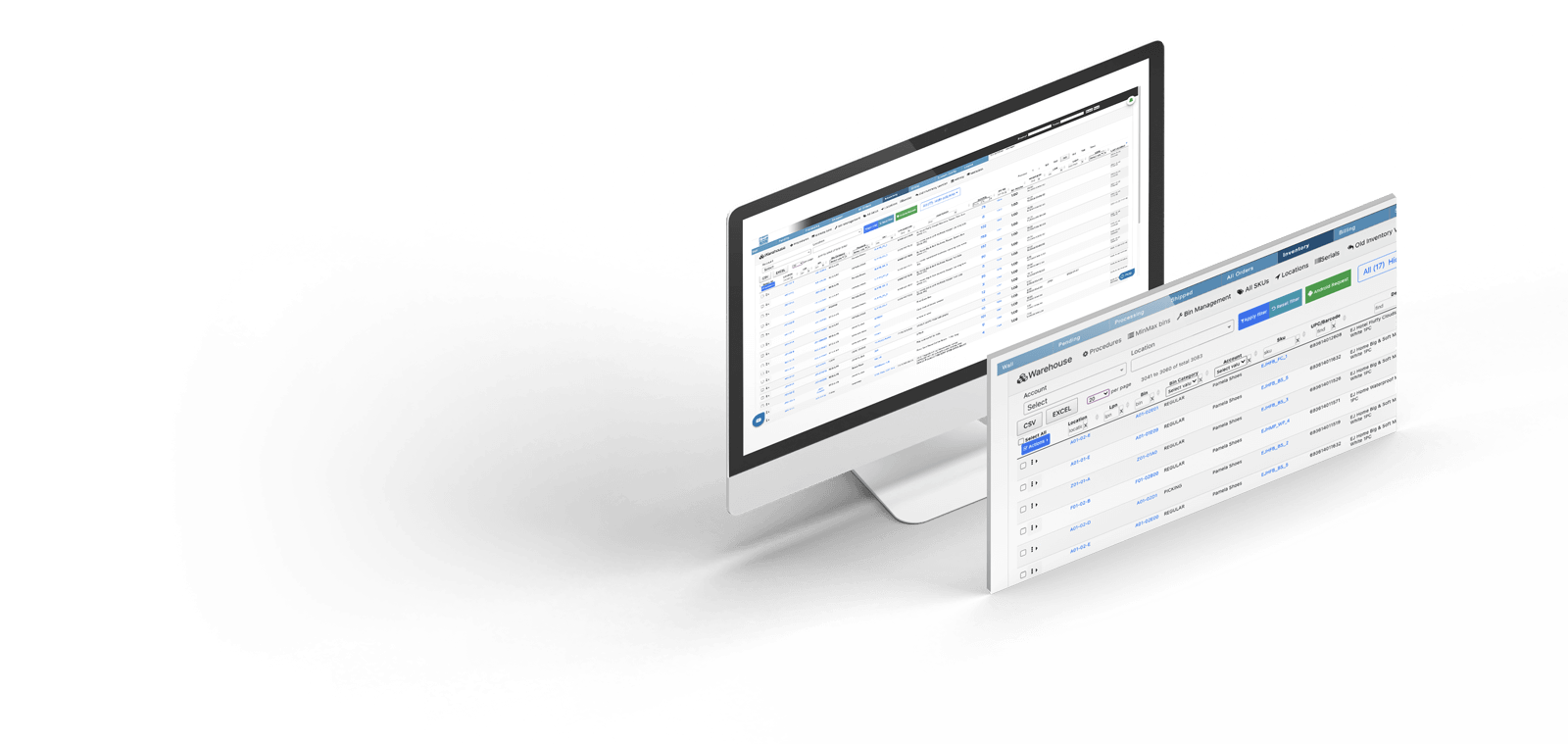
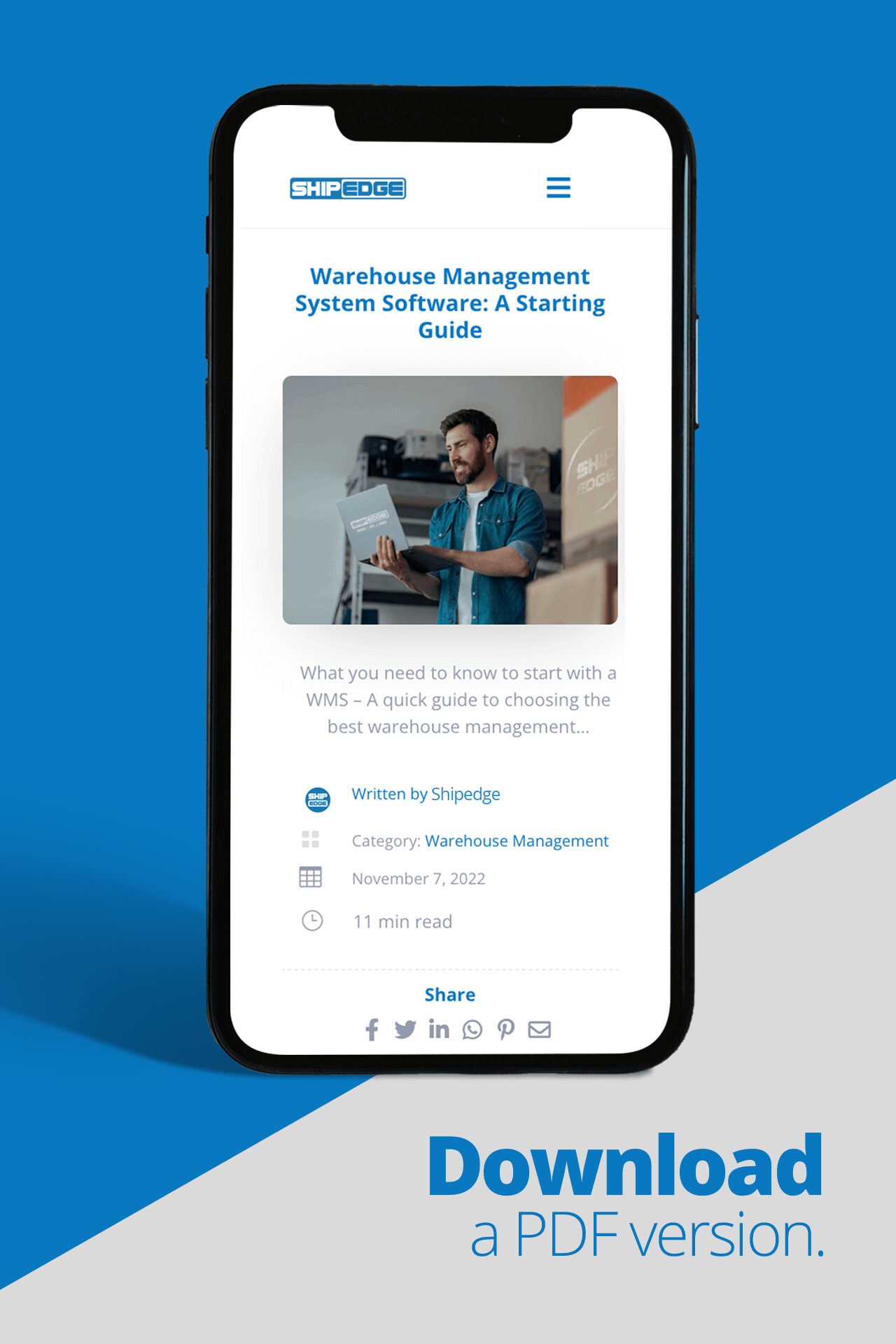
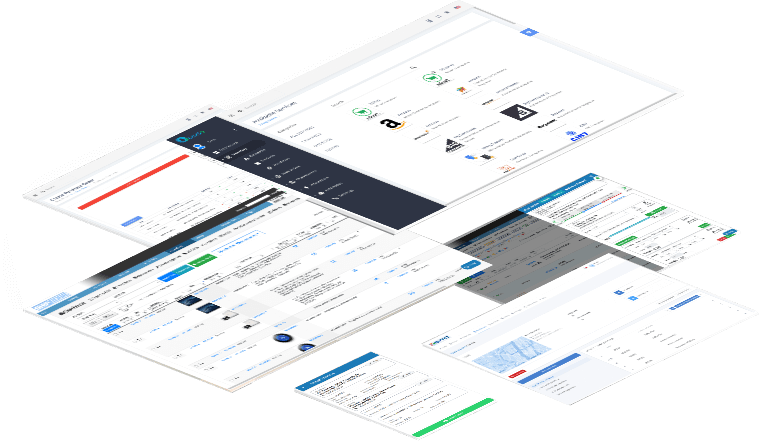

0 Comments